Idea by
Juraj Horňák
https://www.behance.net/jurajhornak
Call for ideas 2020
MestoCity
MestoCity
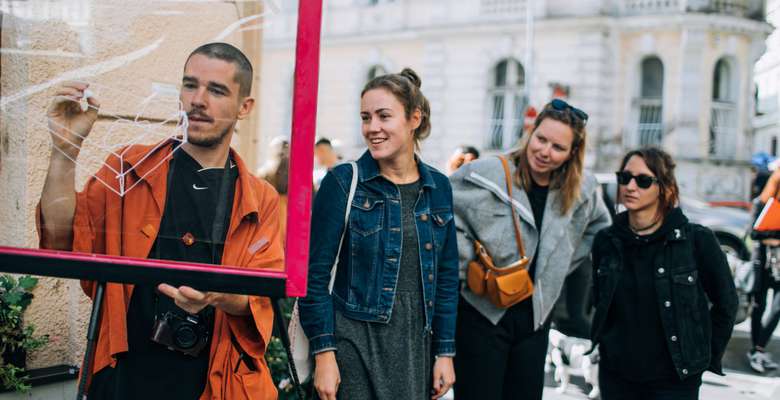
- New alliances
I believe architecture is not only about buildings. The future or architecture should be about seeing and using better what we already have. Cities around the world are full with public space that is empty. In the same time we see closing of people in their own bubbles more and more every day thanks to new technologies and globalization. Public space should be a place where people meet, talk and experience something new. Place where different bubbles meet and unexpected situations happen. We as architects should help the city to become a such place and find ways how to make public space attractive and vibrant. In my project I started with mental activation of abandoned places in the capital of Slovakia, Bratislava. Through the Pink frame, random passers-by could render their vision for different places and in this way uncover the hidden potential of the city. I believe the future change has to start in the mind. In this time I develop the project further and create simple intervetions.
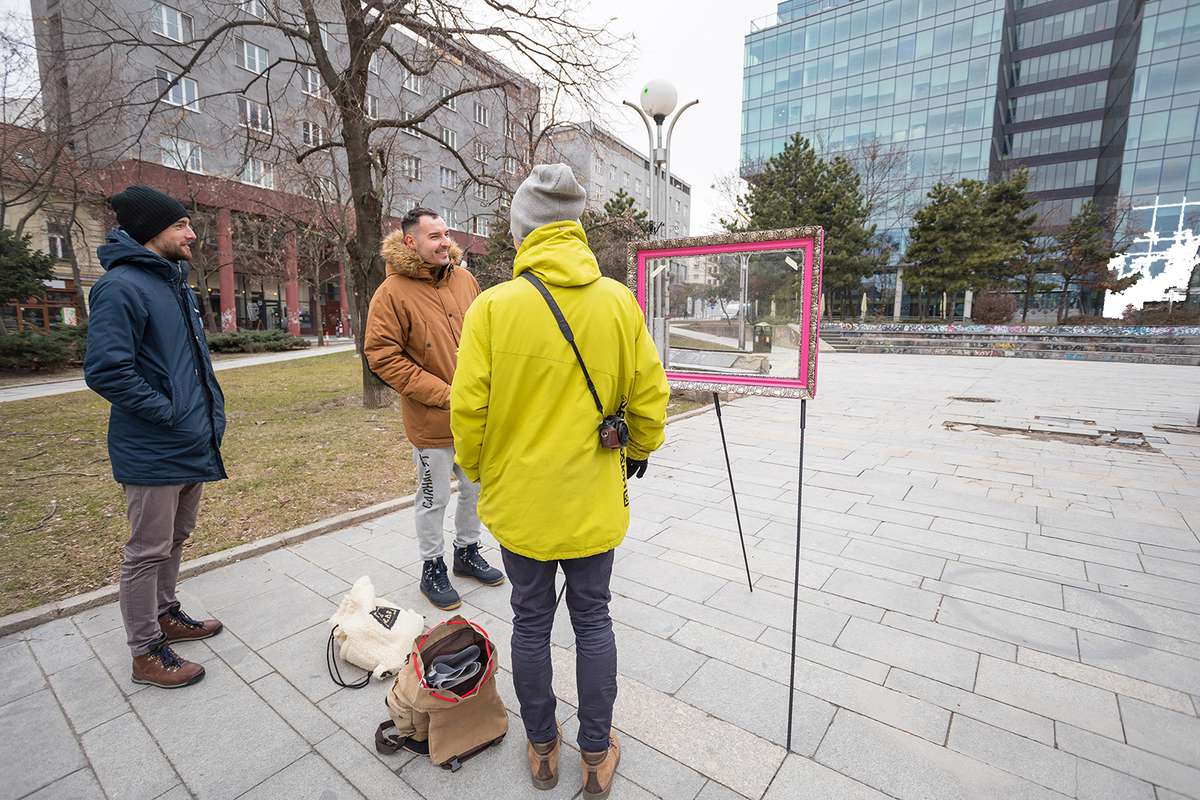
I started to randomly stop passers-by at specific places in Bratislava which I found underdeveloped and abandoned. This specific place is Kollarovo námestie in the center of Bratislava that currently serves only as a place to cross or for youngsters to drink in the night. Place with amazing potential forgotten in the middle of the city. People could tell me their Idea, we would discuss it and together draw it directly on the frame. I take picture of every idea.
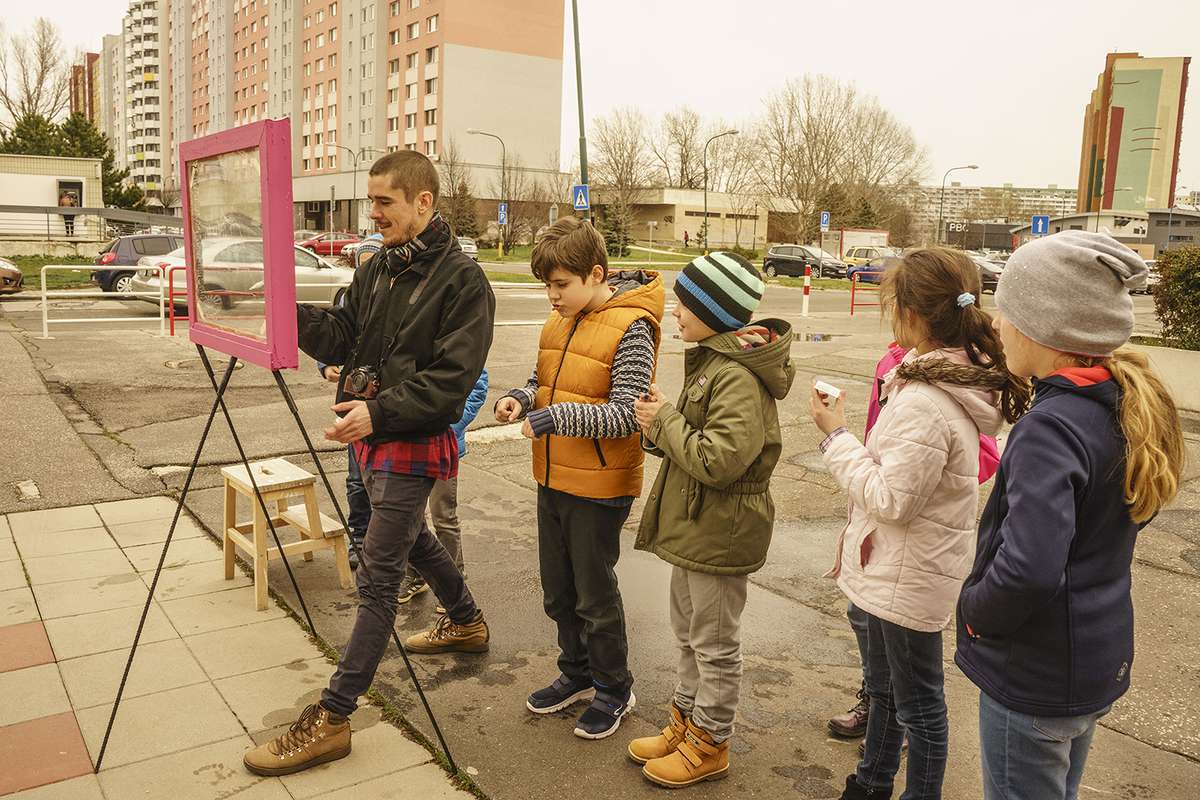
I collaborated with Jan Urban, an architect who works on his project Tvory mesta, in which he is teaching kids at the primary school in Petržalka about architecture and public space. With kids we did one session with my Pink frame and imagined the possible future for the public space around the school. The most inspirative and interesting ideas came from this session. I could see that adults are bounded too much to reality when thinking of visions, while kids can be completely free. I love it.
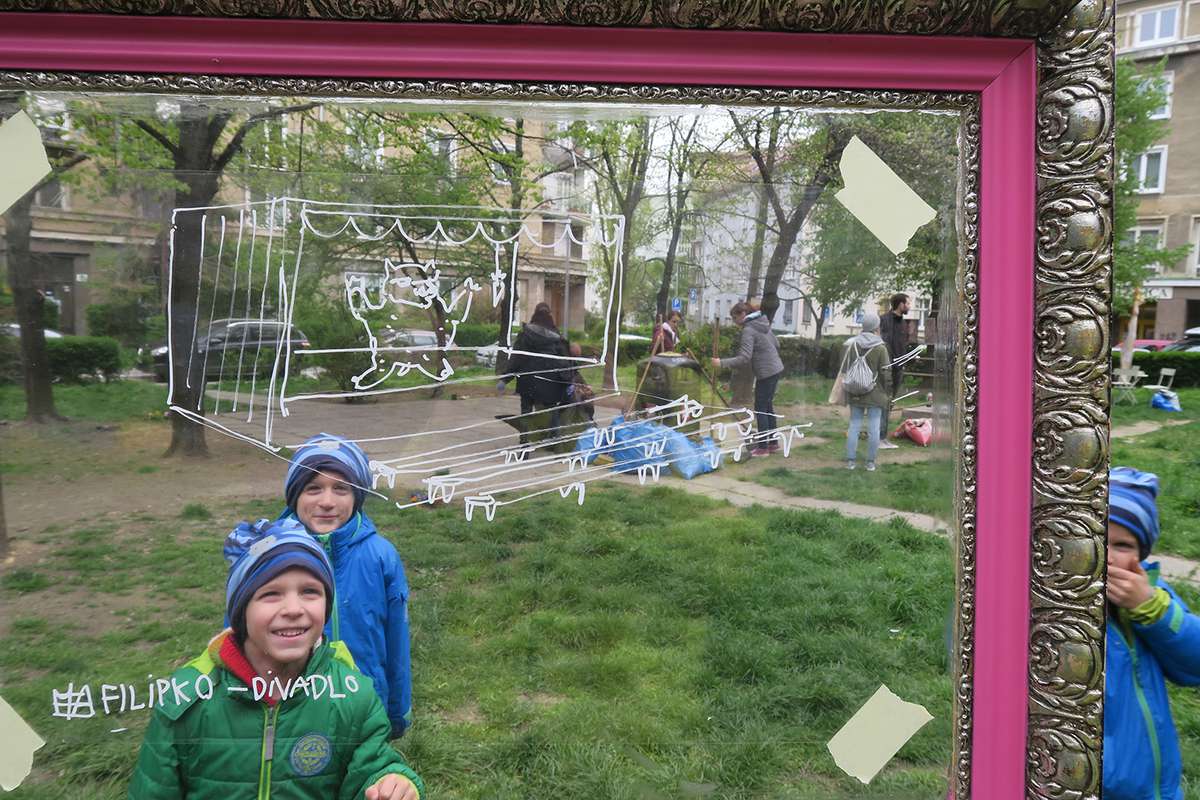
After some time I received more and more messages of people calling me and my project for specific occasions. Here I was called to come to a neighborhood gathering that was focused on revitalization of the little park. I helped people to visualize their ideas and start better discussion about the future of this forgotten place.
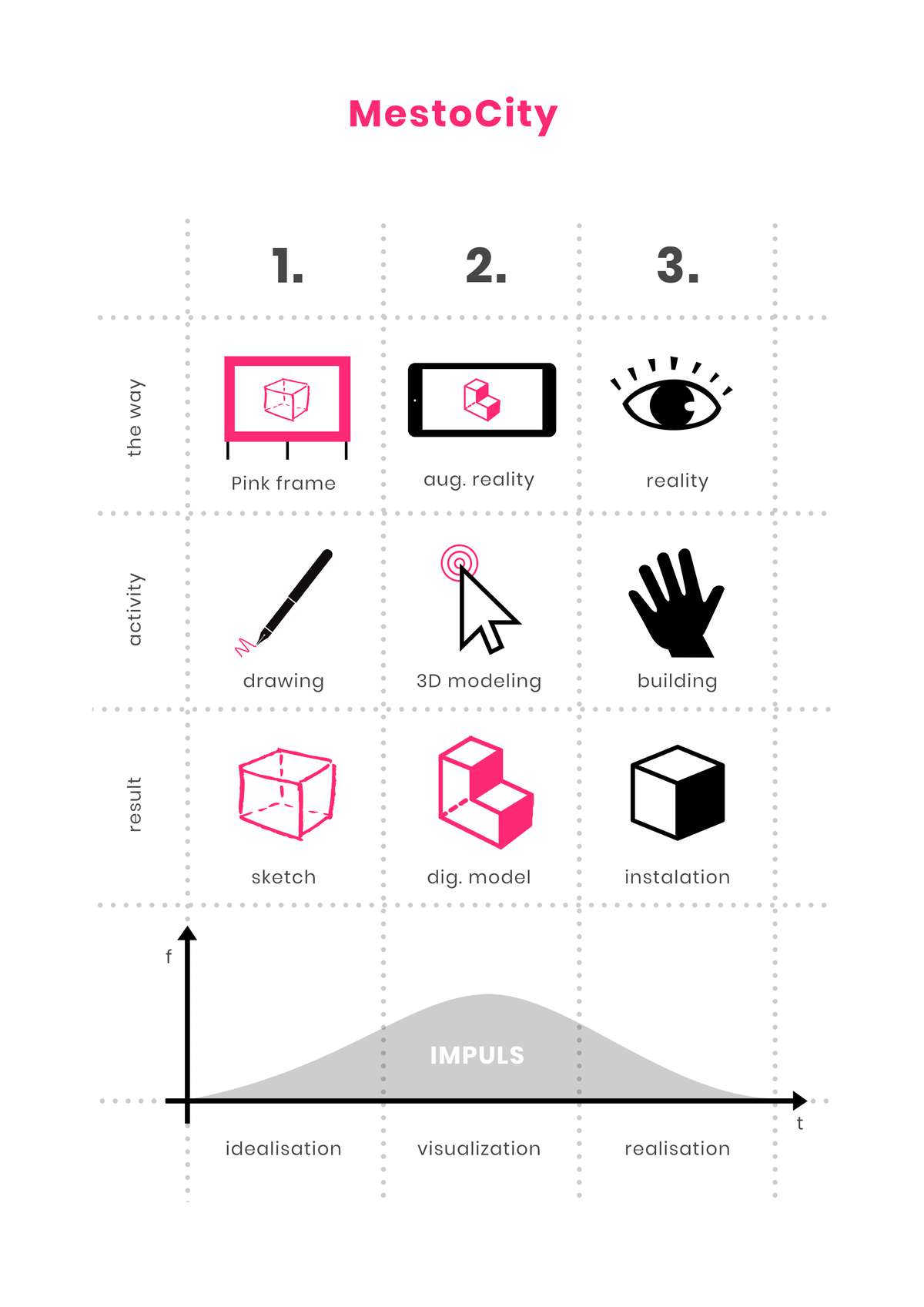
The project MestoCity started as a method to work playfully with the public space and is freely developing further. It has three stages. In the first one I am collecting the ideas in the streets with the Pink frame. In the second I am changing those sketches into digital 3D models and projecting them back in the streets with AR technology. In the third I am doing experimental temporary intervention inspired by the previous stages. Together it is one process to activate the city.

In the collaboration with Bratislava street festival Dobrý trh we focused on the potential of one parking spot. Together with random participants we were imagining the future when there will be less cars on the streets and therefore more public space. This process we repeated few times at different places in Bratislava and created certain catalog of ideas. Ideas crazy and too naive to come from professional, yet very inoperative for the future of the city.
MestoCity
MestoCity

- New alliances
I believe architecture is not only about buildings. The future or architecture should be about seeing and using better what we already have. Cities around the world are full with public space that is empty. In the same time we see closing of people in their own bubbles more and more every day thanks to new technologies and globalization. Public space should be a place where people meet, talk and experience something new. Place where different bubbles meet and unexpected situations happen. We as architects should help the city to become a such place and find ways how to make public space attractive and vibrant. In my project I started with mental activation of abandoned places in the capital of Slovakia, Bratislava. Through the Pink frame, random passers-by could render their vision for different places and in this way uncover the hidden potential of the city. I believe the future change has to start in the mind. In this time I develop the project further and create simple intervetions.
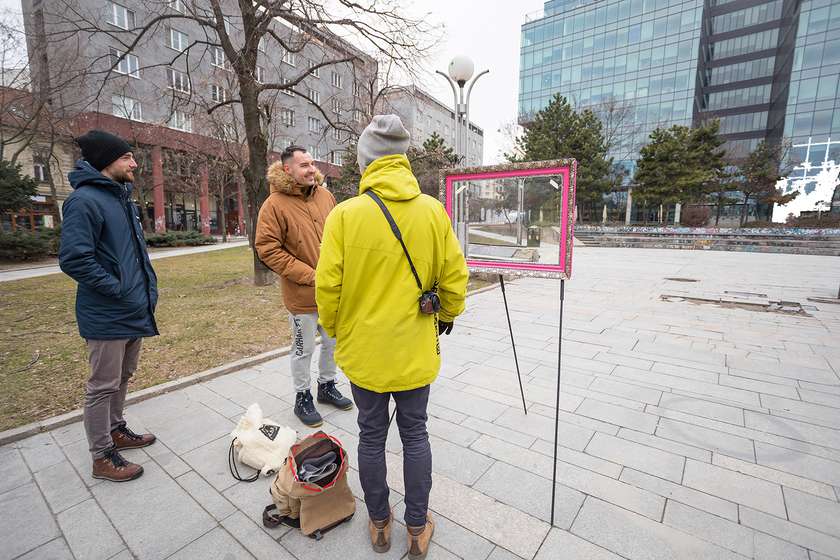
I started to randomly stop passers-by at specific places in Bratislava which I found underdeveloped and abandoned. This specific place is Kollarovo námestie in the center of Bratislava that currently serves only as a place to cross or for youngsters to drink in the night. Place with amazing potential forgotten in the middle of the city. People could tell me their Idea, we would discuss it and together draw it directly on the frame. I take picture of every idea.
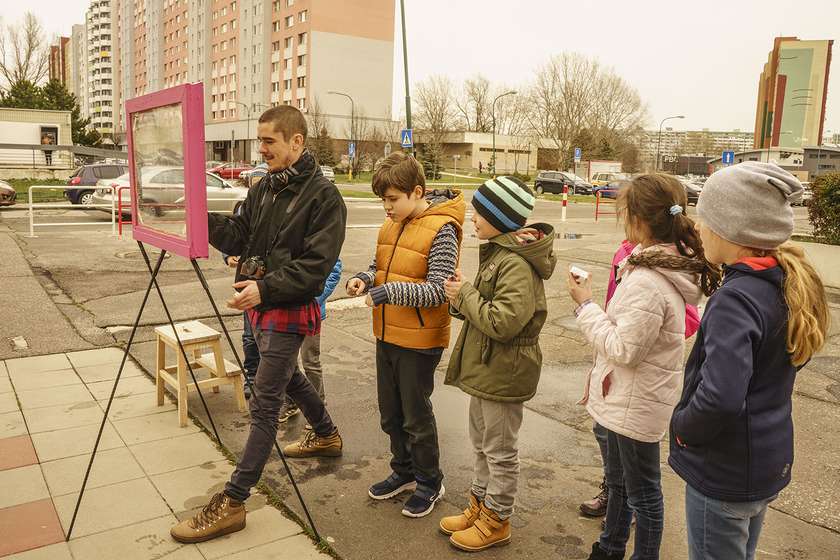
I collaborated with Jan Urban, an architect who works on his project Tvory mesta, in which he is teaching kids at the primary school in Petržalka about architecture and public space. With kids we did one session with my Pink frame and imagined the possible future for the public space around the school. The most inspirative and interesting ideas came from this session. I could see that adults are bounded too much to reality when thinking of visions, while kids can be completely free. I love it.
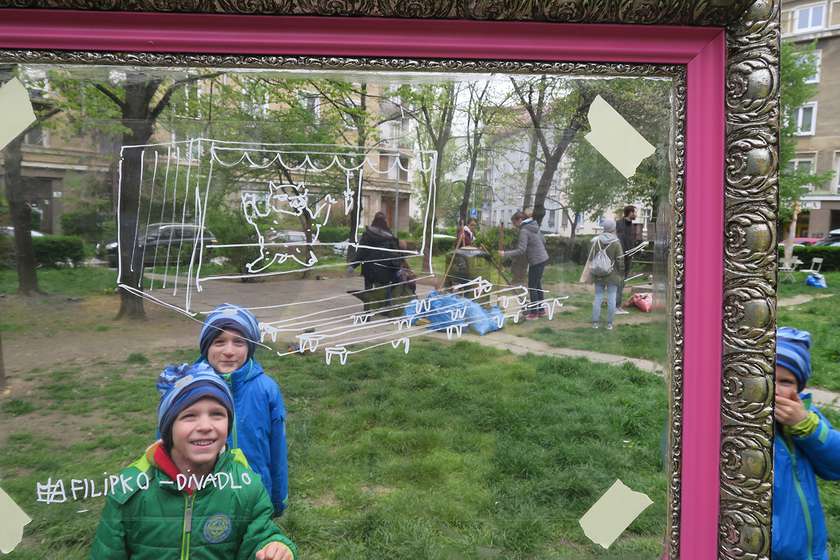
After some time I received more and more messages of people calling me and my project for specific occasions. Here I was called to come to a neighborhood gathering that was focused on revitalization of the little park. I helped people to visualize their ideas and start better discussion about the future of this forgotten place.
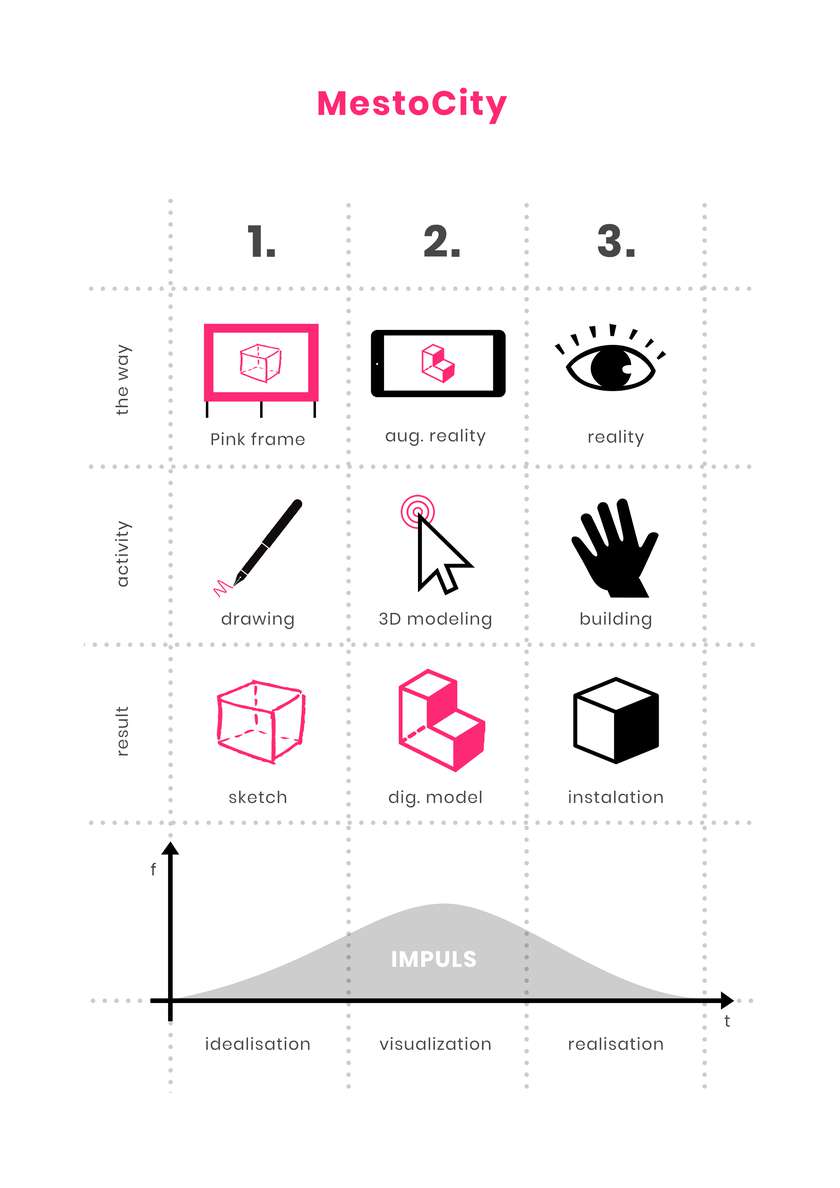
The project MestoCity started as a method to work playfully with the public space and is freely developing further. It has three stages. In the first one I am collecting the ideas in the streets with the Pink frame. In the second I am changing those sketches into digital 3D models and projecting them back in the streets with AR technology. In the third I am doing experimental temporary intervention inspired by the previous stages. Together it is one process to activate the city.
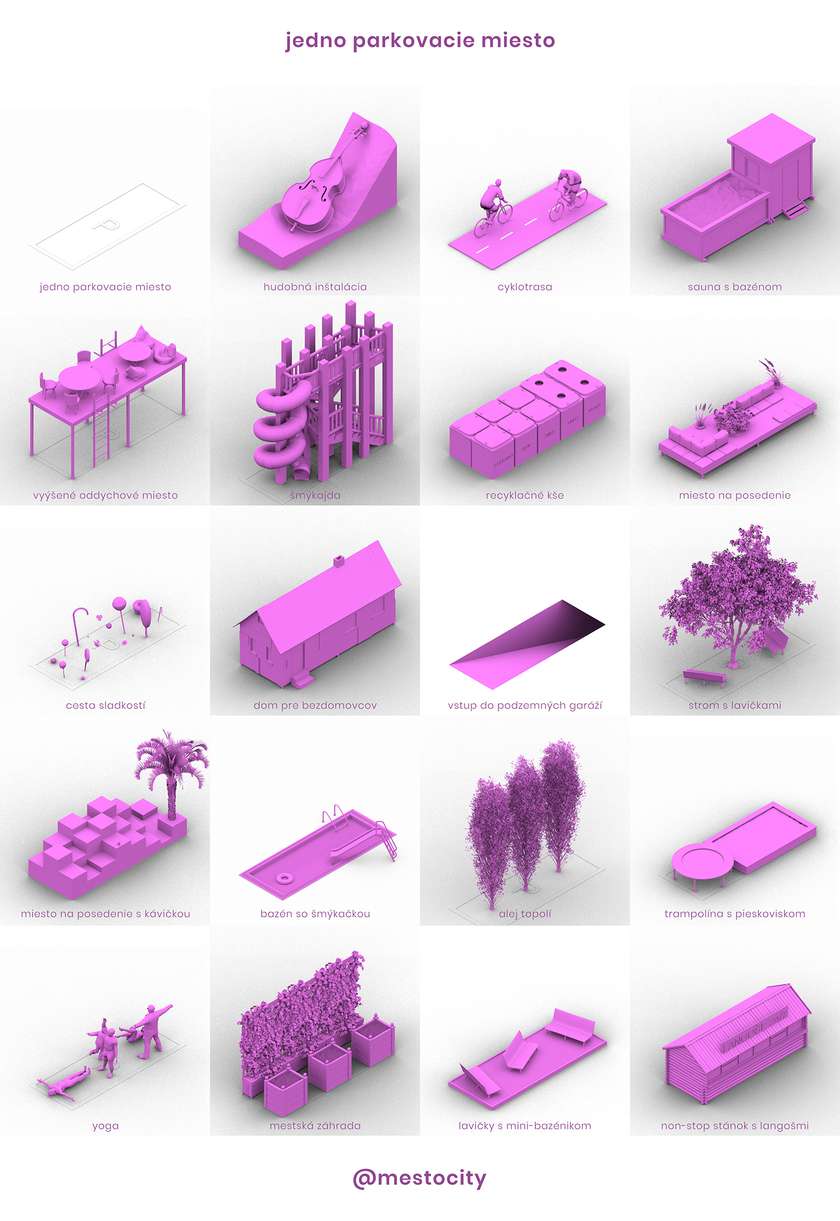
In the collaboration with Bratislava street festival Dobrý trh we focused on the potential of one parking spot. Together with random participants we were imagining the future when there will be less cars on the streets and therefore more public space. This process we repeated few times at different places in Bratislava and created certain catalog of ideas. Ideas crazy and too naive to come from professional, yet very inoperative for the future of the city.